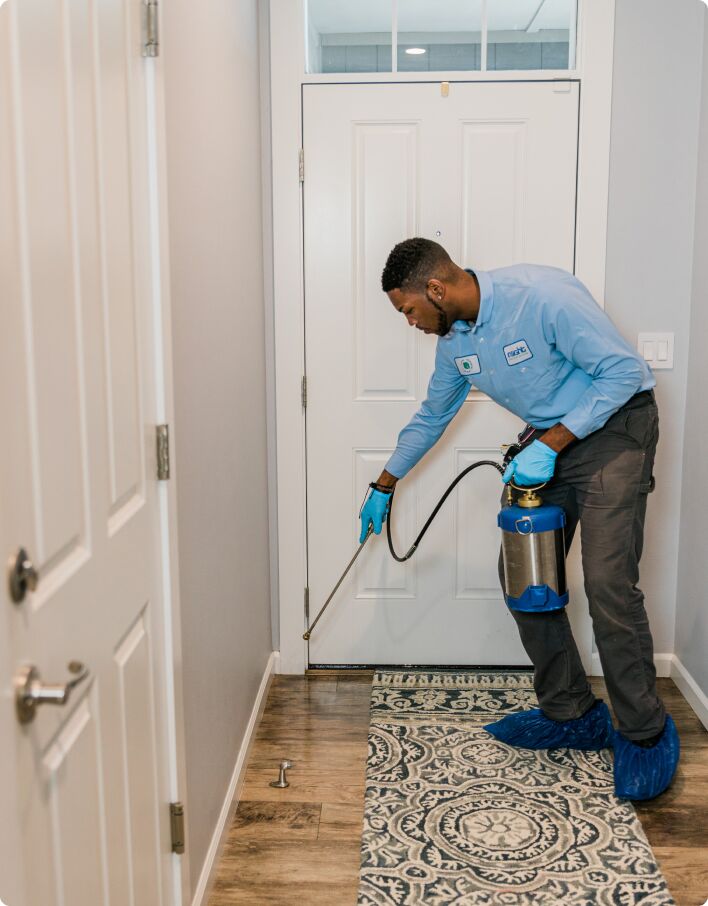Quality A1 Pest Control Services Charlotte - Protect Your Home
Quality A1 Pest Control Services Charlotte - Protect Your Home
Blog Article
Bed Pest Therapy Break Down: Contrasting Chemical Vs. Non-Chemical Solutions
In the world of bug control, especially when dealing with the relentless problem of bed insects, the selection in between chemical and non-chemical treatment solutions can be a pivotal one. Both techniques use distinct benefits and downsides, affecting elements such as effectiveness, safety and security considerations, and total cost. By examining the nuanced details of each technique, a more clear understanding of which path to seek in addressing a bed pest infestation can be acquired.
Effectiveness of Chemical Therapies
Chemical therapies for bed bug problems have been widely acknowledged for their potent and fast efficiency in eradicating these insects. When thinking about the efficiency of chemical treatments, it is vital to recognize that they can give a fast and detailed solution to a bed insect problem.
Moreover, chemical treatments have the benefit of supplying residual effects, meaning that they can remain to get rid of bed pests even after the preliminary application. This residual action is particularly helpful in combating any kind of potential re-infestations. Additionally, the fast activity of chemical treatments can bring relief to individuals dealing with severe bed insect infestations, allowing them to regain control of their living areas promptly.
Safety Interest In Chemical Solutions
One essential element that calls for cautious factor to consider when using chemical options for bed insect treatment is making sure the safety and security of owners and the setting. Direct exposure to specific chemicals utilized in bed pest therapies can lead to respiratory system concerns, skin inflammation, or other negative reactions, specifically in individuals with pre-existing conditions or level of sensitivities.
Moreover, the ecological effect of chemical solutions is one more substantial consideration. Some pesticides made use of in bed insect treatments may be damaging to beneficial insects, wild animals, and ecosystems if they leach right into the soil or water systems. It is vital to make use of chemical therapies carefully, complying with safety standards, and considering much less hazardous choices to alleviate these risks and make certain the safe and reliable administration of bed bug invasions.
Advantages of Non-Chemical Methods
Considering the prospective security problems and environmental influence associated with chemical solutions for bed bug therapy, exploring non-chemical approaches provides an appealing choice with numerous distinctive advantages. Non-chemical treatments are ecologically pleasant, as they do not contribute to air or water air pollution, making them a lasting selection for bug control.
In addition, non-chemical options can be reliable in targeting bed insects, including hard-to-reach locations where chemical treatments might not permeate. Techniques such as heat treatment, vacuuming, heavy steam cleaning, and mattress coverings give thorough eradication without making use of hazardous chemicals. Moreover, non-chemical strategies can be much less turbulent, requiring marginal prep work and allowing for quicker reentry right into dealt with locations. Generally, opting for non-chemical bed bug therapy methods not only focuses on security and environmental defense however additionally ensures efficient and detailed pest control.
Limitations of Non-Chemical Treatments

Additionally, non-chemical therapies often require A1 exterminator charlotte nc multiple applications to attain successful obliteration. This can be time-consuming and may not constantly guarantee full removal of all bed bugs and their eggs, especially in covert or hard-to-reach areas.
Moreover, the success of non-chemical treatments greatly counts on appropriate implementation and thoroughness, which can be testing for individuals without specialist competence. Poor application of non-chemical approaches may cause incomplete elimination, leading to consistent infestations and the demand for extra treatments.
Consequently, while non-chemical treatments have their benefits, it is vital to acknowledge these limitations and consider them when figuring out one of the most effective strategy for taking care of bed pest infestations.
Cost Comparison: Chemical Vs. Non-Chemical Options
Provided the restrictions associated with non-chemical treatments, a necessary facet to evaluate in the context of bed insect administration is the cost contrast in between chemical and non-chemical alternatives. In contrast, non-chemical treatments like warm treatment or steam can be a lot more costly, with costs varying from $1,000 to $6,000 for a whole home. While the first expense of chemical treatments might seem reduced, numerous treatments may be called for to completely eliminate the problem, possibly boosting the general cost.
Verdict

Thinking about the possible safety and security worries and ecological effect connected with chemical services for bed bug therapy, checking out non-chemical approaches offers a promising option with a number of distinct benefits.Offered the limitations linked with non-chemical therapies, a crucial element to review in the context of bed pest management is the cost comparison in between chemical and non-chemical options. In comparison, non-chemical treatments like warm therapy or vapor can be extra costly, with prices ranging from $1,000 to $6,000 for a whole home. While the preliminary expense of chemical treatments may appear lower, several treatments may be called for to fully get rid of the infestation, possibly increasing the general expense.In conclusion, when comparing chemical and non-chemical bed pest therapy choices, it is crucial to think about efficiency, safety and security, benefits, restrictions, and price.
Report this page